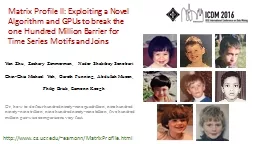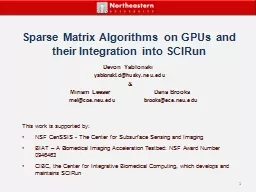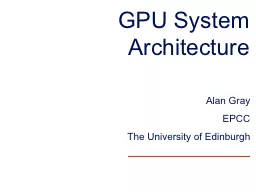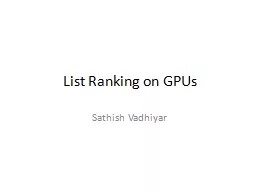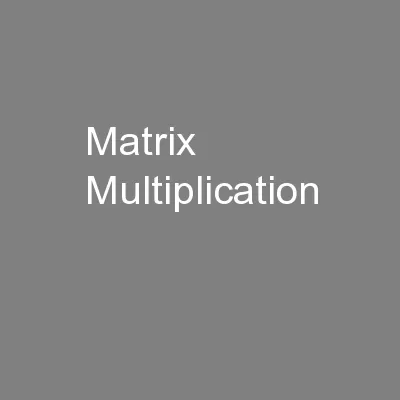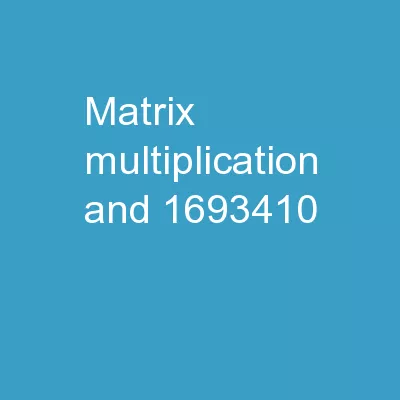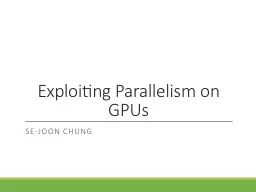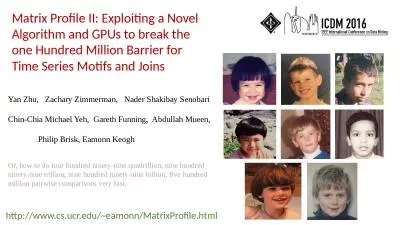PPT-Matrix Profile II: Exploiting a Novel Algorithm and GPUs to
Author : aaron | Published Date : 2017-06-20
Yan Zhu Zachary Zimmerman Nader Shakibay Senobari ChinChia Michael Yeh Gareth Funning Abdullah Mueen Philip Brisk Eamonn Keogh httpwwwcsucredueamonnMatrixProfilehtml
Presentation Embed Code
Download Presentation
Download Presentation The PPT/PDF document "Matrix Profile II: Exploiting a Novel Al..." is the property of its rightful owner. Permission is granted to download and print the materials on this website for personal, non-commercial use only, and to display it on your personal computer provided you do not modify the materials and that you retain all copyright notices contained in the materials. By downloading content from our website, you accept the terms of this agreement.
Matrix Profile II: Exploiting a Novel Algorithm and GPUs to: Transcript
Download Rules Of Document
"Matrix Profile II: Exploiting a Novel Algorithm and GPUs to"The content belongs to its owner. You may download and print it for personal use, without modification, and keep all copyright notices. By downloading, you agree to these terms.
Related Documents

